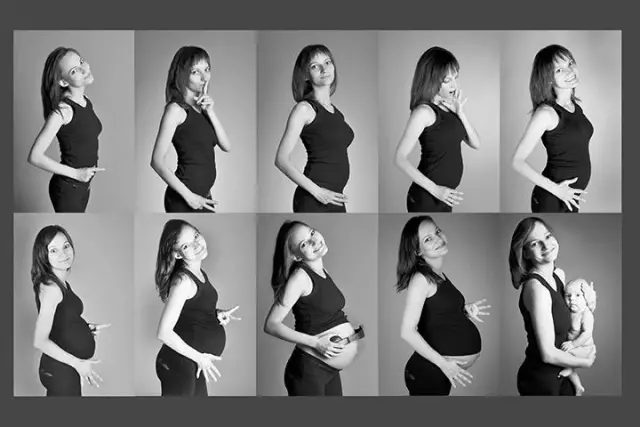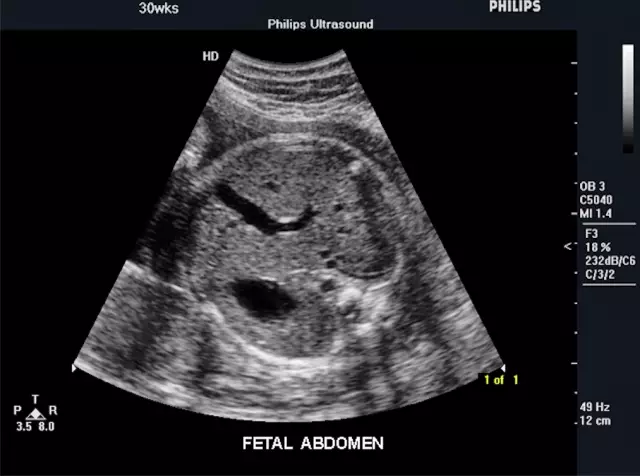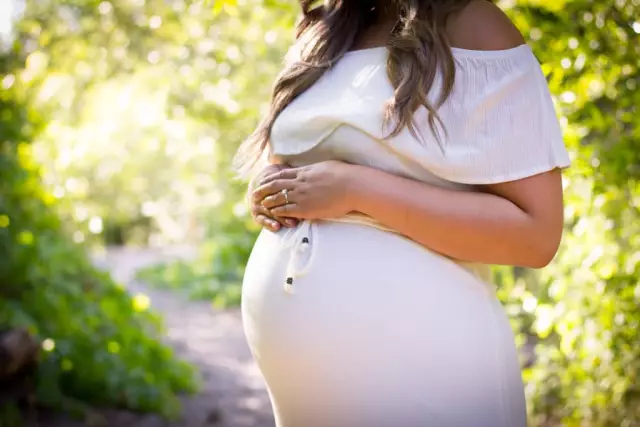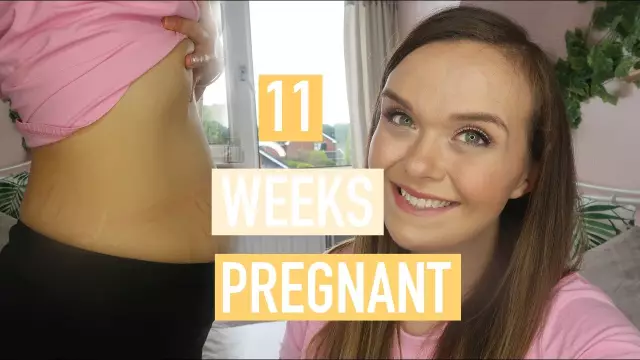- Author Rachel Wainwright [email protected].
- Public 2023-12-15 07:39.
- Last modified 2025-11-02 20:14.
3 weeks pregnant

The countdown of 3 weeks of pregnancy in obstetrics comes from the first day of the last menstrual bleeding in a woman.
Fertilization
At the 3rd week of pregnancy, the egg cell finally matures in the ovarian follicle, the follicle bursts, and the egg cell enters the abdominal cavity. Fimbriae (fimbria) of the fallopian tube are located in the immediate vicinity of the ovary. They constantly make oscillatory movements towards the lumen of the tube, dragging the egg along with them. As it moves through the fallopian tube, fertilization occurs.
Fertilization is performed by one of the sperm that reaches the fallopian tube the fastest. It most often occurs in a section of the tube called the ampoule.
As a result of the fusion of male and female germ cells, a zygote is formed. Thanks to the contractile waves of the fallopian tubes, it continues to move towards the uterine cavity.
After a few hours, the zygote begins to divide without increasing in size. In this case, after the first division, 2 cells are formed, which are called blastomeres. A day later, the zygote already consists of 4 cells, which continue to divide exponentially. For three days, blastula becomes similar to a blackberry or mulberry, and at this stage it is called morula (which means "mulberry"). The future fetus at the 3rd week of pregnancy is only 0.1 mm in size.
At the 3rd week of pregnancy, changes also occur at the site of the bursting follicle in the ovary, from which the so-called yellow body is formed. This "temporary" endocrine gland got its name from the color of its cells. The corpus luteum synthesizes the female sex hormone progesterone, which helps to maintain pregnancy.
If the implantation of the ovum into the wall of the uterus occurs, the corpus luteum remains until the moment when the formed placenta takes over its function. In the event that the implantation does not occur, after 10 to 12 days it undergoes a reverse development and disappears, turning into a whitish body. An ultrasound scan at the 3rd week of pregnancy allows you to see a yellow body in one of the ovaries.
By the end of the 3rd week of pregnancy, 6-7 days after fertilization, the blastocyst tries to attach to the wall of the uterus - the stage of implantation begins. This is a very important period, it is also called critical. If everything goes well, the pregnancy persists and develops further, but it is at this time that the risk of its termination is high, as evidenced by spotting at the 3rd week of pregnancy.
Changes in the body at 3 weeks of gestation
Hormonal shifts make themselves felt as the first changes in a woman's well-being. Sometimes they are less pronounced, sometimes stronger - it all depends on their subjective assessment and the degree of sensitivity of the organism. First of all, they begin to be noticed by those who planned a pregnancy and are waiting for its onset.

The appetite changes - it either increases, or disappears, or selective addictions to a particular product appear. It is possible to suspect the onset of 3 weeks of pregnancy on the basis of an irresistible craving for some exotic food, for example, for everything sour or for dry pasta, but aversion to meat often arises.
The hormonal surge also changes the emotional background of a woman - she becomes capricious, quick-tempered and whiny. The nervous system in this way lets you know that it is ready for the formation of the dominant pregnancy.
Changes also affect the mammary glands - they are rough, slightly increase in size, the nipples may darken. Discharge at 3 weeks gestation, which sometimes comes from the nipples, is also due to hormonal levels.
If the stomach hurts at the 3rd week of pregnancy, this can be both a symptom of egg implantation and a threat of termination of pregnancy. In the case of a miscarriage that has begun, pain at 3 weeks of gestation is often accompanied by bleeding.
Examination at the 3rd week of pregnancy
The abdominal circumference at the 3rd week of pregnancy does not change, since the period is still too short. Blood tests for sex hormones will be indicative - the level of progesterone rises more than 2 times, and chorionic gonadotropin can also be detected. A pregnancy test at 3 weeks may show a mild positive result.
When conducting an ultrasound scan at the 3rd week of pregnancy, a fertilized egg can be found in the uterine cavity at the stage of implantation into its wall. The size of the fetus at the 3rd week of pregnancy is very small, therefore, an ultrasound scan on an expert class apparatus will be more informative.
YouTube video related to the article:
Found a mistake in the text? Select it and press Ctrl + Enter.






